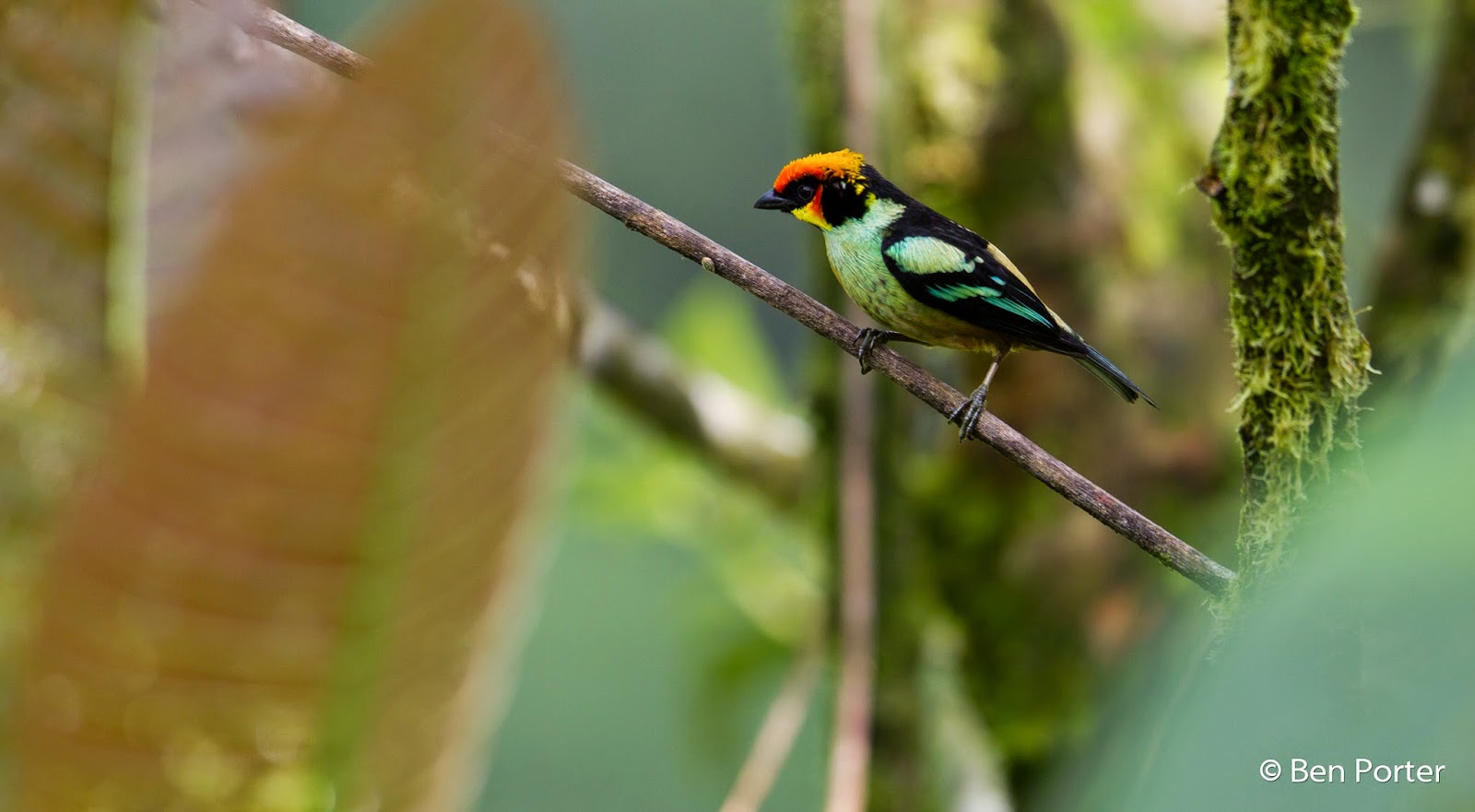I recently spent three days travelling to some local birding sites around the foothills of the Andes with a great guide called Nelson. We used a mixture of public transport and hitch-hiking to get to three main birding sites, mainly that of Milpe, Rio Silanche and Mashpi. These three areas are of differing habitats and elevations, which allowed us to see over 200 species during the three days.
Milpe
Milpe is a smallish area of 100 hectares of cloud forest preserved by the
Mindo Cloud Forest foundation, about two hours from Bellavista. At 1100 metres, it is significantly lower than Bellavista, and so you can find a large range of species which do not occur at higher altitdues. The various trails through the forest are great for finding mixed flocks, but primary targets around these paths include the trio of Manakins (
Golden Winged,
Club-winged and
White-bearded Manakins), near-endemic species like
Choco Toucan,
Choco Warbler and
Choco Trogon, and occasionally the
Long-wattled Umbrellabird. Some fruit feeders in front of the small self-catering lodge attract the magnificent
Pale-mandibled Aracari, along with the occasional
Choco Toucan and plenty of tanagers. Some particularly nice species that we saw whilst visiting included the
Spotted Nightingale Thrush,
Chestnut-backed Antbirds, brief views of
Scaly-throated Leaf-tosser, and
Purple Honeycreeper.
Rio Silanche
This is another reserve run by the MCF, although there are no lodges or facilities here- just the small 80 hectare area of lower montane cloud forest. At 500 metres elevation, the climate and habitats are very much different to that of Bellavista, and another array of species can be found here. The main attraction of this site is a canopy forest tower. This concrete and iron structure is 20 metres high, and therefore allows viewing over the canopy of the forest, thus making birding a fair bit easier in some cases. Some target species in this area include species like Purple-chested Sunbird, Scarlet-rumped Cacique, Purple-throated Fruitcrow, Western White-tailed Trogon, more Choco Toucans, Chestnut-mandibled Toucan, and occasionally the Long-wattled Umbrellabird. Mixed feeding flocks can contain some very nice birds, and the variety of habitats in this area aided the finding of things like Laughing Falcons, Boat-billed Flycatcher, Slaty-capped Shrike-vireo, Band-backed Wren, Western Slaty Antshrike, and lots of White-bearded Manakins. The more open terrain makes it easier to see raptors such as Hook-billed Kites and Barred Hawks.

Mashpi
This site is back up at 1100 metres, and is about two hours away from Bellavista, accessed via Nanegalito and Pacto. A huge lodge is opperational here, and owns a large area of 1500 hectares of pristine primary forest. Unfortunately it is extremely expensive to stay at the lodge, and so most birding is constrained to the roadside. Nevertheless, most of the target species can be found in mixed feeding flocks by the roadside, like the Moss-backed and Glistening Green Tanagers, the Black and Rufous-brown Solitaires, Pacific Tuftedcheek, Orange-breasted Fruiteater, Indigo Flowerpiercer and Yellow-collared Honeycreeper. If it isn't misty, the views are stunning, and the birding can be great when mixed flocks are encountered.
Here are a few images from these various locations:
 |
| Rusty-marginated Flycatcher |
 |
| Pale-mandibled Aracari |
 |
| Choco Toucan |
 |
| Guayaquil Woodpeckers |
 |
| Pale-mandibled Aracari |

|
| Orange-breasted Fruiteater |
 |
| Moss-backed Tanager |
 |
| Green Thorntail |
 |
| Slaty-capped Shrike-vireo |
 |
| Laughing Falcon |
 |
| Pacific Hornero |
 |
| Lyre-tailed Nightijar |
 |
| Crimson-rumped Toucanet |
 |
| Flame-faced Tanager |
 |
Green Thorntail
|
 |
Golden Tanager
|




















No comments:
Post a Comment